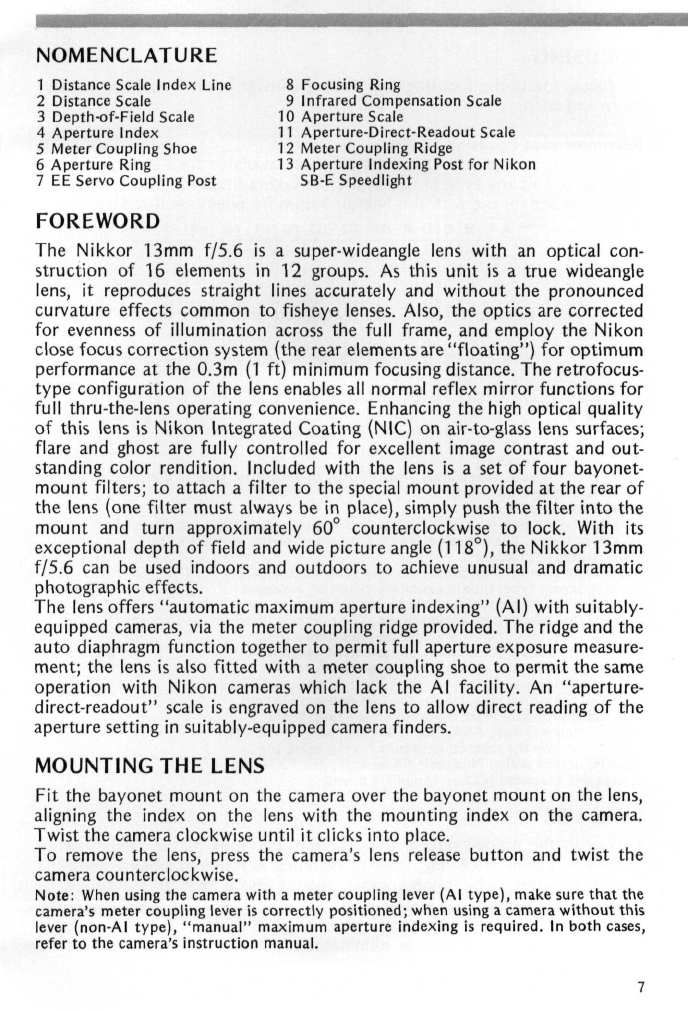
NOMENCLATURE
1 Distance Scale Index Line 8 Focusing Ring
2 Distance Scale 9 Infrared Compensation Scale
3 Depth-of-Field Scale 10 Aperture Scale
4 Aperture Index 11 Aperture-Direct-Readout Scale
5 Meter Coupling Shoe 12 Meter Coupling Ridge
6 Aperture Ring 13 Aperture Indexing Post for Nikon
7 EE Servo Coupling Post SB-E Speedlight
FOREWORD
The Nikkor 13mm f/5.6 is a super-wideangle lens with an optical
con-
struction of 16 elements in 12 groups. As this unit is a true wideangle
lens,
it reproduces straight lines accurately and without the pronounced
curvature effects common to fisheye lenses. Also, the optics are corrected
for evenness of illumination across the full frame, and employ the Nikon
close focus correction system (the rear elements are "floating") for optimum
performance at the 0.3m (1 ft) minimum focusing distance. The retrofocus-
type configuration of the lens enables all normal reflex mirror functions for
full thru-the-lens operating convenience. Enhancing the high optical quality
of this lens is Nikon Integrated Coating (NIC) on air-to-glass lens surfaces;
flare and ghost are fully controlled for excellent image contrast and out-
standing color rendition. Included with the lens is a set of four bayonet-
mount filters; to attach a filter to the special mount provided at the rear of
the lens (one filter must always be in place), simply push the filter into the
mount and turn approximately 60° counterclockwise to lock. With its
exceptional depth of field and wide picture angle (118°), the Nikkor 13mm
f/5.6 can be used indoors and outdoors to achieve unusual and dramatic
photographic effects.
The lens offers "automatic maximum aperture indexing" (Al) with suitably-
equipped cameras, via the meter coupling ridge provided. The ridge and the
auto diaphragm function together to permit full aperture exposure measure-
ment; the lens is also fitted with a meter coupling shoe to permit the same
operation with Nikon cameras which lack the Al facility. An "aperture-
direct-readout" scale is engraved on the lens to allow direct reading of the
aperture setting in suitably-equipped camera finders.
MOUNTING THE LENS
Fit the bayonet mount on the camera over the bayonet mount on the lens,
aligning the index on the lens with the mounting index on the camera.
Twist the camera clockwise until it clicks into place.
To remove the lens, press the camera's lens release button and twist the
camera counterclockwise.
Note:
When using the camera with a meter coupling lever (Al type), make sure that the
camera's meter coupling lever is correctly positioned; when using a camera without this
lever (non-AI type), "manual" maximum aperture indexing is required. In both cases,
refer to the camera's instruction manual.
7


















